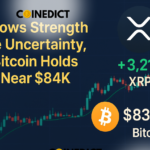
Five Key Cryptocurrency Predictions for 2025
The cryptocurrency market has had an exceptional 2024, with Bitcoin and Ethereum leading the charge and significant institutional interest driving new highs. But as we step into 2025, the road ahead looks dynamic and unpredictable. Here are five major predictions shaping the outlook for the crypto market in the coming year: 1. A Crypto Bear Market May Return Despite Bitcoin’s impressive rally in 2024—driven by spot Bitcoin ETF approvals, halving events, and MicroStrategy’s bold Bitcoin purchases—a pullback seems inevitable. MicroStrategy’s leveraged strategy has boosted Bitcoin’s momentum, but as the company nears its borrowing limits, sustained buying could taper off. Historically, Bitcoin has seen corrections following major rallies, and 2025 may witness a bear market with declines exceeding 20%. 2. Ethereum Will Outperform Bitcoin Ethereum is positioned to outshine Bitcoin in 2025. Spot Ethereum ETFs, approved in 2024, have opened the doors for mainstream investors to access Ethereum easily, mirroring the impact Bitcoin ETFs had this year. Ethereum’s utility as the backbone of decentralized applications and smart contracts gives it an edge. Additionally, historical patterns suggest that when Bitcoin dominates, investors often pivot to Ethereum for better returns. This trend could accelerate Ethereum’s growth, making it one to watch in 2025. 3. Meme Coins Could Lose 50% of Their Value Dogecoin and Shiba Inu, while enjoying moments of fame in 2024, might face steep losses in 2025. Meme coins often thrive on hype but lack substantial real-world utility, leaving them vulnerable during market corrections. Although Elon Musk’s connection to Dogecoin and his new role in the Trump administration gave the coin a temporary boost, the lack of tangible use cases may lead to a sharp decline in their value as speculative interest fades. 4. Spot ETFs for Altcoins Will Gain Approval With the pro-crypto Trump administration taking office, regulatory clarity is expected to improve. This could pave the way for spot ETFs for major altcoins like Solana, XRP, and Cardano. While crypto legislation might not be a top priority initially, the shift in regulatory tone will likely lead to more accessible investment vehicles by late 2025, helping altcoins gain wider adoption and driving demand. 5. A U.S. Bitcoin Strategic Reserve is Unlikely There has been speculation about President-elect Trump’s plans to establish a Bitcoin strategic reserve, but significant hurdles make it improbable. The U.S. already holds over 200,000 Bitcoin seized from criminal activities, but creating an official reserve would require Congressional approval. Given the ongoing federal deficit and resistance from the Federal Reserve, such a proposal seems unlikely to gain traction. What’s Next for Crypto? 2025 promises to be a year of change and consolidation in the cryptocurrency market. While challenges like market corrections and meme coin volatility loom, opportunities in Ethereum, altcoins, and institutional adoption could shape a new era for digital assets. For investors, staying informed and strategic will be key as the crypto market navigates another unpredictable year.

















